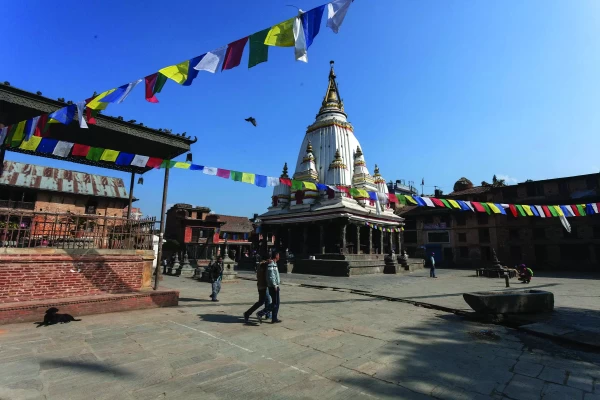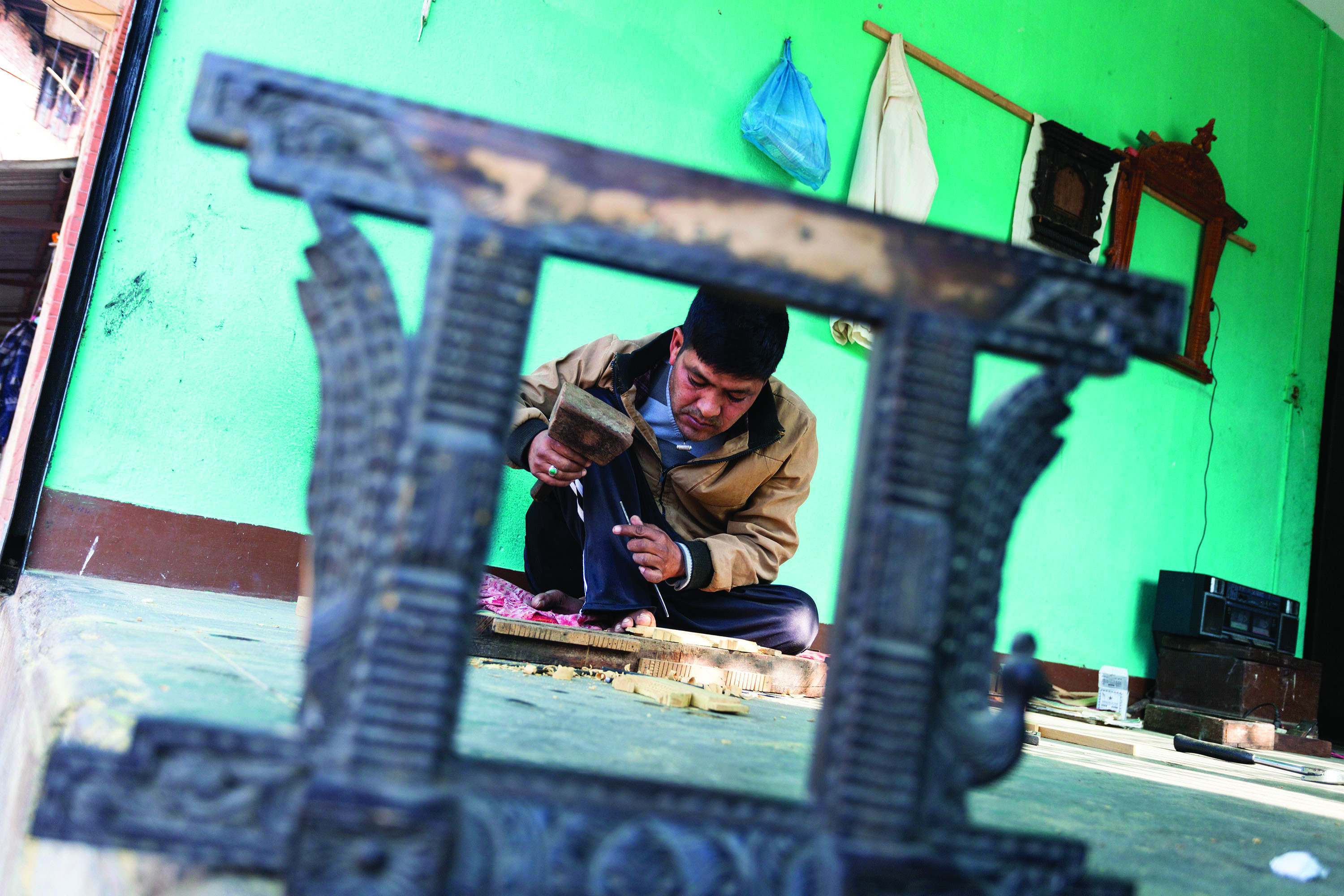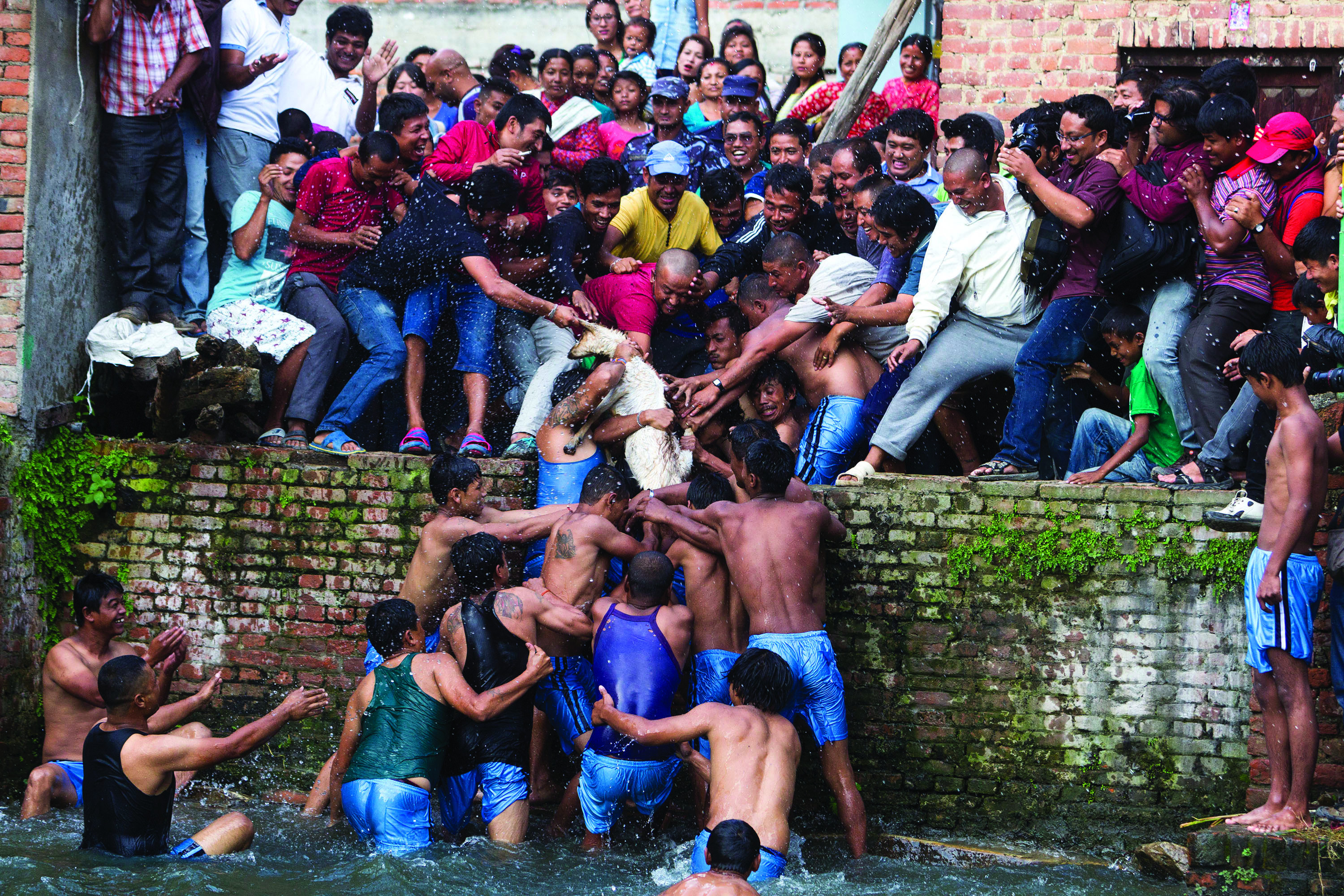Bungamati : A City Rising back from Ruins

Everyday life at the 14th century old Bungamati city is quite peaceful. During the sunny days of winter, you can see the elderly basking in the sun as they watch their grandkids playing on the streets. You hear the continuous clanging of hammers into wood from a distance as traditional wood carvers prepare another piece of art.
Bungamati: Home of the God of Rain and Harvest
Bungamati is believed to be the home of the God of Rain and Harvest, the Rato Machhindranath, also known as Bungadyo, literally meaning the God from Bungamati. As the legend goes, Bungadyo was brought to Kathmandu Valley to end a long drought that had tormented the city for decades. A king went on a journey with two escorts to bring the Bungadyo to Kathmandu Valley to end the drought. But after Bungadyo was brought to the valley, disputes occurred about which city the Bungadyo would reside in. Finally, it was decided that the Bungadyo would reside for six months in Bungamati and six months in Patan. Today, this ancient city is a prime example of Newari culture that has been preserved over the ages.
Impact of Earthquake at Bungamati

However, traces of the April 2015 earthquake have been left all over the city. Although the debris has been cleared up and houses are being rebuilt, what strikes a visitor as a grim reminder of the earthquake is the gaping empty space where the 16th Century Rato Machhindranath Temple once used to be. Bungamati was one of the worst hit regions during the earthquake. Around 30 people lost their lives and 853 houses were destroyed. Most of the houses had been built in traditional architectural style with elaborately carved wooden windows and doors, a specialty of the wood artisans of Bungamati. The earthquake had not only destroyed human life and properties but people feared the worst when the main temple had fallen. It is believed that if tragedy strikes the Bungadyo, the country will suffer from bad omen. Luckily, during the Jatra, the temple was empty as the Bungadyo had been shifted to the chariot for the Jatra processions.
You may also like: The Kumari and the Bungadyo Jatra
Currently, the planning phase for the temple along with two other temples in the core area, the Bhairab Temple and the Manakamana Temple has been passed to begin the rebuilding process. The Sri Lankan government has pledged 4.5 crore for the restoration of the temples. “We need to rebuild the temples not just to preserve our heritage but also to restore hope in our people.” says Prem Bhakta Maharjan, a member of the Bungamati Renovation and Development Council. The temple which was built in Shikhara style and white washed will be restored in its original form. The project is planned to be completed within two years.
Since Bungamati suffered quite the damage, help has been flowing in since initial impact, with volunteers helping to remove the debris and the local people getting involved in safely tucking away the valuables found inside the temple. However, the compensation that the government had promised arrived late. Residents of Bungamati including Maharjan were forced to make temporary shelter in the rice fields because their houses were no longer safe to live in. But with the onset of monsoon season and the rodents in the fields, most of the people had no choice but to return to what was left of their homes before financial help arrived. But each household only received two lakhs out of the five lakhs that was promised. Either way, it was far too less to rebuild a traditional home. “The community has been very patient till now. But the government needs to act fast.” states Maharjan. Maharjan, who is also a resident of Bungamati, saw his two houses collapse during the earthquake where Maharjan and his brother’s family lived. Thankfully, none of his family members sustained serious injuries.
Despite the shortcomings, the people of Bungamati have not been shaken. The residents decided to establish the Bungamati Restoration and Development Council in order to help rebuild the city. “We told ourselves that what the earthquake brought us was an opportunity.” says Maharjan, “This is an opportunity to rebuild Bungamati better and more beautiful than it was.” he adds. Currently the Council has been busy bridging the gap between the community and the municipality to help provide soft loans to the people to rebuild their homes. The community is also acting to cut down costs for the victims to buy rebuilding items such as bricks and cement.
 Re-establishing Bungamati as a Tourist Destination
Re-establishing Bungamati as a Tourist Destination
As for the future, the Bungamati Council is planning to expand their reach by involving more people from the community. They are also acting with unhabitat to re-establish Bungamati as a tourist destination. The city with its rich culture adorned with old styled houses and ponds seeks to bring back its value by adding homestays and eateries for tourists. The council has been motivated by the positive reaction from several institutions who want to support the cause. Many technical workshops are going on in Bungamati in order to help re-establish the skill set of the people.
One of the key assets of Bungamati is the large number of skilled wood carvers whose skills have been passed down from generations. The community seeks to restore the fallen temples and houses with their help. Even better, 9 wood artisans from Bungamati are provided with classes on traditional wood carving with a master artist right there in Bungamati. This project is being funded by Artists for Nepal, situated in Netherlands. Such efforts are helping the community get back on its feet.
Through the hurdles and challenges, the Bungamati community is trying their best to revive the old city. With continuous efforts made by the community and their vision for the better future of their city, Bungamati is definitely on the path to restoration. As for the Bungadyo, the Rain God is currently residing in Lalitpur in the temple at Tabahal. The Tabahal Temple did not sustain any damages so Bungadyo rests there safely awaiting the annual Rato Machhindranath Jatra in April.
Things to do in Bungamati
Bungamati and its neighboring town of Khokana are quite small so you can cover the entire cities within a day. This is a great place to spend a quiet afternoon wandering around the old alleys and ponds that give the vibes of a medieval era.
Where to go?
Bungamati-Khokana
How to go?
-Take a local bus from Jawalakhel- Ekantakuna bus stop. It will take about half an hour to reach the Bungamati bus stop.
What to do?
-Stroll around Bungamati and Khokana
-Visit the Karyabinayak Temple and Shikali Mai Temple
- Visit the Rato Macchindranath Chowk and observe the rebuilding process after the earthquake
- Observe medieval Newari lifestyle
What to eat?
- Local Newari food, Samay baji and Thwo (Rice beer)
What to buy?
- Local wood artisan’s crafts to help support the traditional occupation of Bungamati
- Mustard seed oil in Khokana made in the same traditional method that has been passed down from generations
